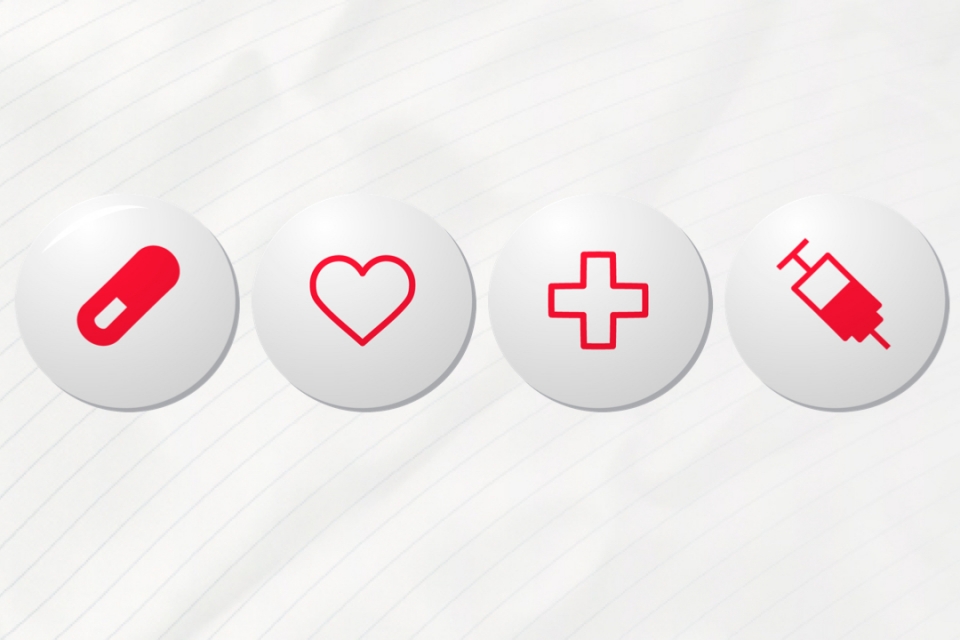By Kristen Mitchell
Every February we turn our attention to heart health for American Heart Month, but people should be thinking about how they can minimize their risk factors for heart attacks and sudden cardiac events all year.
Heart disease, which can lead to a heart attack or stroke, is the leading cause of death for men and women in the United States, according to the Centers for Disease Control and Prevention. Brian Choi, associate professor of medicine and radiology at the School of Medicine and Health Sciences and co-director of advanced cardiac imaging in the division of cardiology, spoke to GW Today about heart attack symptoms to look for and the best practices for maintaining heart health.
Q: Approximately every 40 seconds, an American will have a heart attack. What are the symptoms?
A: Most heart attacks, also known as a myocardial infarction or acute coronary syndrome, present with chest discomfort, frequently described as a pressure or squeezing sensation. Less frequently, there may also be similar pain in the arms, neck, jaw, back or stomach. Other associated symptoms are shortness of breath, a cold sweat, nausea and lightheadedness.
While chest pain is the most common symptom in both men and women, women are more likely to present with one of the less frequent symptoms, so it is important to recognize that any of these symptoms could be a warning sign.
Q: What are some things that put people at risk for heart attacks?
A: There are risk factors that are within your control and those that are not—you can change what you do but not who you are. Risk will increase with age and any family history of coronary heart disease. Men have more heart attacks that women.
Within your control, however, are the following modifiable risk factors: smoking, cholesterol, blood pressure, diabetes and physical activity. A healthy lifestyle including daily exercise and a balanced diet will help to prevent high cholesterol, high blood pressure and diabetes. If you smoke, quit. Some individuals will need to take medications to keep these modifiable risk factors under control, but daily exercise and a healthy diet remain a foundational cornerstone for prevention.
Q: When it comes to heart health, what should I be talking to my doctor about?
A: Your doctor will gauge your risk of developing coronary disease based upon your risk factors and a candid discussion of barriers to reduce your modifiable risk factors is essential. Your doctor can provide advice on quitting smoking. When blood pressure, cholesterol and blood sugar (diabetes) cannot be controlled despite best efforts for lifestyle changes, your doctor can prescribe medications that can help keep these under control.
Q: What kinds of food are good for the heart?
A: Limit saturated and trans fats, salt and added sugars—reading food labels can help you select healthier choices. If you enjoy eating meat, choose fish and poultry over red meat or pork products. Choose leaner cuts of red meat and pork products and avoid processed foods. Maintain variety to your diet by emphasizing fruits, vegetables, nuts, whole grains and low-fat dairy products. Don't consume more calories than you use up through your daily activities.
Q: What kinds of exercises are good for the heart?
A: The American Heart Association recommends at least 30 minutes of moderate-intensity aerobic exercise like walking, running, swimming or biking for five days per week or 25 minutes of vigorous-intensity aerobic exercise for three days per week, and moderate-to-high intensity muscle-strengthening activity at least two days per week.
For many, this may seem like a high bar, but any is better than none. Every journey begins with the first step, and even a few minutes of exercise makes a difference. Look for opportunities to make your daily routines more active—take the stairs instead of elevators, walk instead of ride and choose entertainment options that include physical activities.
Q: What can I do to encourage my family and friends to be heart healthy?
A: Ask your family and friends to join you! Exercise and healthy eating can and should be enjoyable—sharing the experience with your loved ones will help you keep your healthy lifestyle goals accountable to one another while keeping it fun and social.





